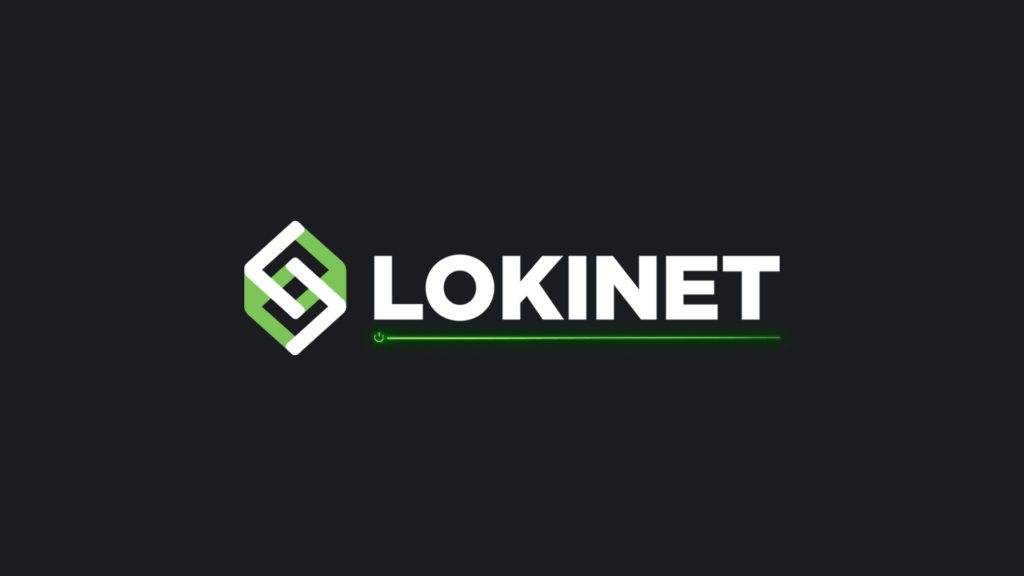Lokinet finally has a new look — it just received its very first GUI. So, now is the perfect time to get started with our onion router.
Lokinet is powered by the decentralised Loki Service Node Network, meaning that it’s sporting market based Sybil-resistance, no central point of failure, and censorship resistance. If you’re looking for more information on Lokinet, it’s worth checking out this blog post, as well as our documentation.
Lokinet: What’s in the GUI?
This is the first version of the Lokinet GUI, so it’s pretty simple at the moment. But, for the curious cats out there — here’s what all those words and numbers actually mean.

Lokinet installation
Feast your eyes on the GUI for yourself — here’s how to get it installed on your machine.
Windows
- Download the Windows .exe file from either the official Loki Project Github releases or Lokinet.org
- Run the .exe file
- Click through the installation
- A command window should open instructing you to ‘Press any key to continue…’
- Launch Lokinet.exe
- The GUI should appear in your system tray, click on the Lokinet icon to display the Lokinet GUI.
macOS
- Download the macOS .pkg file from either the official Loki Project GitHub releases or Lokinet.org
- Run the .pkg file
- Click through the installation
- Launch LokinetGUI from your /Applications folder (or wherever else you installed it to)
- Click the Lokinet icon in the menubar
- Click “Show”
- The GUI should appear; you can now click the large green button to connect.
Linux
Preparation:
1. Update your package lists by running the command
sudo apt-get update
2. Now, you’ll need to fetch new versions of any packages already installed on the machine by running this command:
sudo apt-get upgrade
3. You’ll be prompted to authorise the use of disk space, press y and enter to authorise.
4. You’ll also need to install curl — we’re going to need it later. If you don’t already have it, you can install it with the command:
sudo apt install curl
Installation:
5. This step is only required if you’ve never set up the repository, once it’s set up, it’ll automatically update every time you fetch system updates. The following command installs Jagermans (Lokinet developer) public key used to sign the Binaries.
curl -s https://deb.imaginary.stream/public.gpg | sudo apt-key add -
6. Next, run this command. It tells apt where to find the packages.
echo "deb https://deb.imaginary.stream $(lsb_release -sc) main" | sudo tee /etc/apt/sources.list.d/imaginary.stream.list
7. Then re-sync your package repositories with this command:
sudo apt update
8. Finally, you can install Lokinet using this:
sudo apt install lokinet-gui
9. Done! To Run the GUI, all you need to do is open up the lokinet-gui application.
Accessing Lokinet SNApps
Lokinet doesn’t yet have ‘exit node’ functionality, so even with Lokinet enabled, normal websites will still be accessed through the clearnet — not through Lokinet. Currently, you only get the privacy benefits of Lokinet when you access SNApps (Service Node Applications), which are like normal websites — but accessible only through Lokinet. SNApps are accessed via Service Nodes, meaning that when you access a SNApp, neither the SNApp host or the SNApp user know anything about each other — everything is onion routed for your privacy and security.
If you want to give Lokinet a spin, check out some of these .loki addresses — if you’re connected to Lokinet, they’ll take you straight to a SNApp.
Links:
Wiki (You can find links to other SNApps here) — http://dw68y1xhptqbhcm5s8aaaip6dbopykagig5q5u1za4c7pzxto77y.loki/wiki/
Loki Block Explorer (Here you can browse the Loki Blockchain) — http://kcpyawm9se7trdbzncimdi5t7st4p5mh9i1mg7gkpuubi4k4ku1y.loki/
Arweave Permaweb Gateway (Here you can access the Arweave permaweb) — http://arweave.f59q8xa7m3bmkfi11oijuh4w77ar49hgx8pdexoqonehcywnifsy.loki/
Loki Docs (Here you can read all current documentation for the Loki suite) — lokidocs.dw68y1xhptqbhcm5s8aaaip6dbopykagig5q5u1za4c7pzxto77y.loki
Once you’re connected to Lokinet, you can access all these SNApps in the same way you’d access any old website: plug the link into your browser of choice, and go straight there — now with the benefits of onion routing. It’s worth noting that some browsers will require you to prefix the .loki address with http://, or the browser will interpret the link as invalid.
If you’re not accessing SNApps, switching Lokinet off is as easy as pressing the big green power button in your GUI. Voila!
Have fun out there!
